By Umar Nasser & Tahir Nasser, with essential contributions from Maulana Abdul Ghany Jahangeer Khan
Introduction
“He has created the heavens without any pillars that you can see, and He has placed in the earth firm mountains that it may not quake with you, and He has scattered therein all kinds of creatures; and We have sent down water from the clouds, and caused to grow therein every noble species.” (Qur’an 31:11)
For many years now, ‘New Atheists’ have ridiculed, mocked and derided the Qur’anic claim that mountains prevent earthquakes. They have laughed and jeered, saying that not only do mountains not prevent earthquakes, but they are, more often than not, located at the meeting points of tectonic plates, and are thus more likely to be situated at a place of greater earthquake frequency. Their answers have left many Muslims bemused as to how to understand these verses.
In this article we’re going to showcase how new geological research has proved the Qur’anic statement absolutely true.
What the Qur’an Really Says
The reason that the Qur’anic claim about mountains is so often derided is partly because New Atheists don’t carefully read what the Arabic is actually stating. Nowhere does the Qur’an state that mountains prevent earthquakes. The Qur’an actually states:
“He has placed in the earth firm mountains that it may not quake WITH YOU…” (Qur’an 31:11)
“And We have made in the earth firm mountains lest it should quake WITH THEM…” (Qur’an 21:32)
“And He has placed in the earth firm mountains lest it quake WITH YOU…” (Qur’an 16:16).
The Qur’an does not say that mountains prevent earthquakes per se, but simply that they decrease their intensity to such an extent, that humans do not feel them. The earth still quakes – sure – but it doesn’t “quake with you”, meaning that you don’t feel its effects as much as you otherwise might.
It’s also important to recognise how the Arabic language works when understanding this claim of the Qur’an. Arabic is a language organised according to a root system. This means that each word is derived from a root “stem” (usually tri-literal but sometimes quadri-literal) and all words that share a commonality of meaning, derive from the same stem, even though they may be completely different words.
For example, the word for compassion or rahmah comes from the tri-literal root r-h-m. Another word derived from this root is the word for the womb – rihm. The words compassion and womb are completely different, but their relationship to the same root word tells you something about the womb and about one of the key manifestations of compassion in human relationships – the bond between a mother and her child.
This is how Arabic words work. The interrelationship of a word with its associated root derivations tells you the nature of that object.
In the Qur’an, there are two words used for mountains: jibaal and rawaasiya. Only the latter word rawaasiya is ever described as preventing humans from experiencing the shocks of earthquakes. Jibaal is never used in the Qur’an in this way. [1]
The reason may surprise you.
There’s More to Mountains than Meets the Eye
You know mountains, right – those massive things poking out from the ground, rudely slapping the clouds? Giant structures that humans have an innate, irresistible desire to get to the top of, come rain or shine, risking life and limb to do so?
Well there’s more to mountains than you may think. Mountains don’t just exist on the land surface; they also exist under the sea. In fact, since some 70% of the earth’s surface is covered in water, the vast majority of mountains are actually out of sight, on the sea floor. The Qur’anic use of two separate terms for mountains correlates beautifully to this categorisation of two types of mountains – jibaal for land mountains and rawaasiya for mountains under the sea, also known as “seamounts” in Geology.
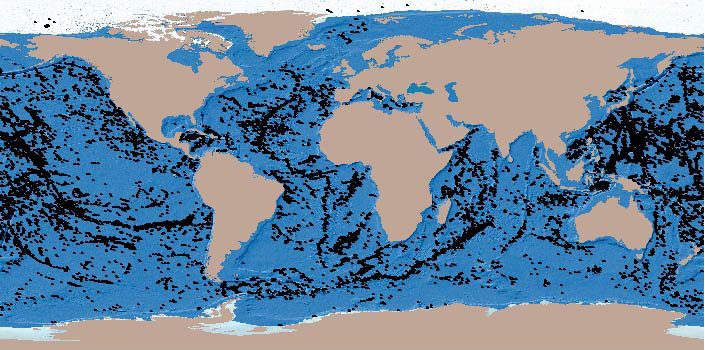
How do we know this? The Arabic tells us clearly.
The word rawaasiya is from the trilateral root r-s-w. Other derivations of this root word, as found in Lane’s Arabic dictionary – a renowned compilation of root derivations – tell us the nature of rawaasiya as opposed to Jibaal. Some relate to the sea, while others have more illuminating meanings, as will be elaborated when we come to the latest scientific research:
- Something stationary or fixed like a ship anchored to sea-floor
- To make the lowest part of a ship reach the bottom of the water, and therefore make the ship remain stationary
- To effect harmony, accommodation or adjustments between things
- To mention a part of a tradition or a story
- Beads on a string or a bracelet made from tortoise shells
- A port for anchoring ships
- To swim with someone
We can see therefore that the meanings seem to correlate to three core ideas: a) something firm and fixed; b) something situated on the bottom of the sea floor and c) something in a beaded fashion effecting harmony or adjustment between things, related in some fashion to the breaking up of a story or tradition and mentioning only a part of it.
The term Jibaal on the other hand, has no such connotations related to it. Its root word is related to terms such as “rough, coarse, big,” concepts of “numerous, large” and is used to describe people who are harsh and hardy by nature, as well as being related to the shape of a “camel’s hump”. This relates to the visible shape of mountains we see above land. Only in one verse does the Qur’an utilise the word rawaasiya for visible mountains, but only does so with clear qualification to indicate their under-sea origin:
“He has placed in the earth firm mountains (rawaasiya) rising above its surface, and blessed it with abundance…” (Qur’an 41:11).
Since the verse is speaking of mountains in the geological sense here, and of a time when the earth was still at its early stages of formation, it will be appropriate to take a look at the root meanings of baarak (bless) that appears in it. The relevant meanings are: “clouds raining down vehemently” and “the creation of permanent water reservoirs” (Lane). Once again, we find that rawaasiya are linked to the oceans. In this case therefore, the reference is to such seamounts as break through the ocean surface as volcanic islands do, creating as they do so, new ecosystems for sustaining life.
When we read the Qur’anic verses in light of these two essential pieces of information, we get to the truth of what the verse is saying. These are: firstly, that mountains decrease the shock of earthquakes such that humans do not experience them as powerfully or as frequently as they might otherwise do, and secondly, that the type of mountain being spoken of is an undersea mountain (‘seamount’), with the qualities outlined above.
When we turn to the latest geological research on the effect of seamounts, we find that the Qur’anic pronouncements on the matter, given to the world 1400 years ago, shine more brightly now than ever before.
Seamounts: Providing Stability in an Unstable World
Before we can truly understand how correct the Qur’anic claim is, we have to understand the nature and origin of seamounts. Seamounts are undersea mountains, arising from the sea floor, which do not reach the water’s surface. They are usually extinct volcanoes. This explains why they’re often found at the centre or the border of tectonic plates. At the centre of tectonic plates you have mid-ocean ridges, the site of seafloor spreading. Here, new oceanic crust is formed where the lava erupts through the seafloor and then cools. The process of the lava erupting forms volcanoes, which become extinct and inactive as they spread, thus forming seamounts. Where tectonic plates meet is another area where seamounts are found in concentration, because the subduction (going under) of one tectonic plate when it meets another tectonic plate causes the higher crust to melt more easily into magma, then work its way up and erupt, again creating seamounts in the process. Seamounts are also formed at ‘hotspots’, random areas of the seafloor which see volcanic activity. They are numerous and spread all over the tectonic plates, constantly moving and shifting as the Earth’s crust is created and destroyed.
It has been known for many years that seamounts are hubs of marine life, with their heat and mineral composition being a beacon for biological life to find food. But in recent years, evidence is increasing that seamounts have a role that directly affects all of us. Numerous researchers have come to the conclusion that seamounts play an important role in reducing earthquake activity. They posit that seamounts diffuse huge ‘megathrust’ earthquakes into much smaller earthquakes. How so?
An excellent review paper in 2011 summarised the science behind the action of seamounts in preventing megathrust earthquakes as follows:[2]
“It has long been noticed that convergent margins where seamounts, aseismic ridges, and other large topographic reliefs subduct tend not to produce large interplate earthquakes (Kelleher and McCann, 1976). The vast majority of subducting seamounts, such as those reported for Mariana (Fryer and Smoot, 1985), Middle America (Ranero and von Huene, 2000), and Hikurangi (Bell et al., 2010), cause numerous small earthquakes, but not large (M>7) ones.”
Explaining the mechanism behind such observations, Wang and Bilek explain:
“To overcome geometrical incompatibility, a subducting seamount must severely modify its surrounding and itself by generating a complex network of fractures (Fig. 2). The fracture system evolves with time as the seamount forces its way through. Stresses in the fracture system are extremely heterogeneous, such that there are always some fractures that are locally at a state of failure while others are far from failure. The slip of the failed fractures causes stress transfer to other parts of the system and loads other fractures to failure. The crosscutting of the fractures in various orientations serves to maintain stress heterogeneity, and local failure of parts of the system continues to happen in a seemingly random fashion. The collective effect of the numerous local failure events is that the volume of damaged rock around the seamount appears to be a creep zone. The seamount thus can move ahead fairly steadily, in contrast with a frictionally unstable smooth fault that displays distinct phases of locking and slip (Fig. 3, right). The steady motion is similar to a stable-sliding smooth fault (Fig. 3, left), but the creeping mechanism is totally different. The network of fractures around a seamount is not a single frictional contact”…”Overall, it is expected that seamount subduction generally has a large aseismic component but produces numerous small earthquakes.”

In layman terms, seamounts provide a texture to the subducting tectonic plate so that one tectonic plate doesn’t slide rapidly, in fits and starts, under another. By providing multiple points of contact, seamounts stop plates from jolting from one site of resistance to another, and they thereby arrest the generation of massive “megathrust” earthquakes. What would have been one massive earthquake from the smooth ‘slip’ of one plate over another is diffused into much smaller seismic activity spread over a much larger area. This is called ‘aseismic creep’, alluding to the fact that the seamounts sticking out from the plates slow down the speed of subduction and make it more continuous. To us, this means that rather than having massive earthquakes and tsunamis generated from plate subduction, we are left in relative peace. The effect of this on human life, and the history of biological evolution, cannot be underestimated.
“By providing multiple points of contact, seamounts stop plates from jolting from one site of resistance to another, and they thereby arrest the generation of massive “megathrust” earthquakes.”
These findings have not been easy to detect, at depths of 20-40km below the Earth’s crust, but new technology has facilitated their investigation and confirmation. These results have now been replicated in different seamount locations, from Sumatra [3] to Chile [4]. We exhibit some of the relevant abstracts below, though these papers should be reviewed in full for a deeper understanding of the matter.
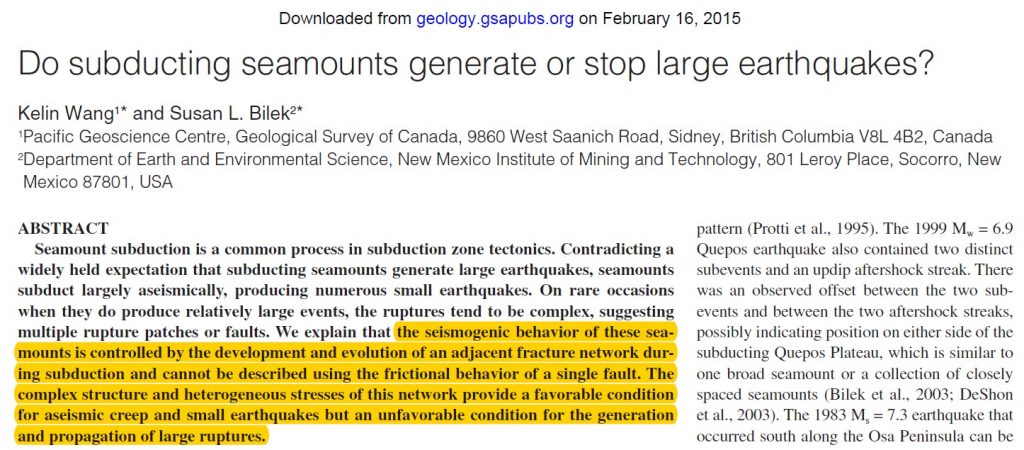

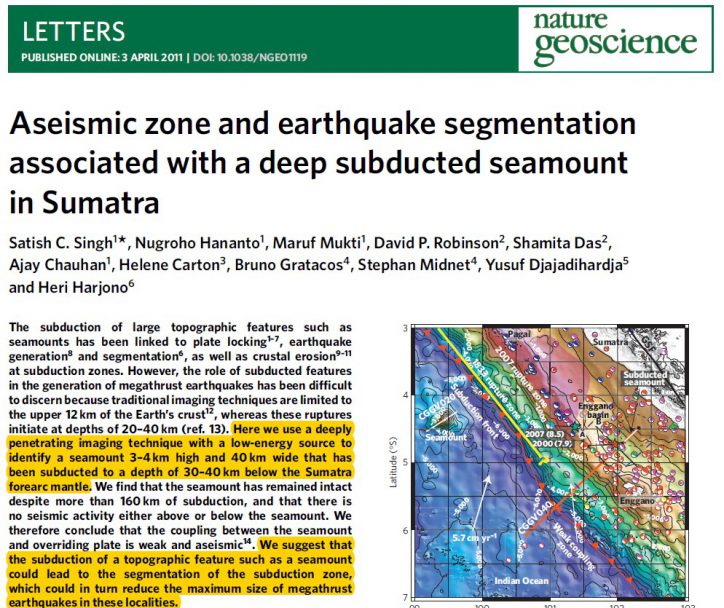
God is in the Detail
The beauty of these verses of the Qur’an can be seen not from a cursory glance, but when we probe the verses deeply, keeping in mind the meanings of rawaasiya, and the mechanisms of “aseismic creep” outlined above.
The word rawaasiya gives the connotation of a mountain that is fixed firmly on the sea-floor “like an anchor of a ship”. But there is more than that. The trilateral association of the word in Arabic further gives the meaning of “effecting adjustment” between things and “relating only a part of a story”. This is strangely enough, precisely what the seamounts achieve: they effect adjustment between the subducting and the overriding plates, by dispersing a single massive force into much smaller ones, across hundreds of resistance points along the fault line. The seamount thus quite literally breaks up something larger into smaller chunks, which, in the words of Wang and Bilek, result in “…stresses in the fracture system (being) extremely heterogeneous, such that there are always some fractures that are locally at a state of failure while others (that) are far from failure. The slip of the failed fractures causes stress transfer to other parts of the system and loads other fractures to failure.”
The word rawaasiya further carries the connotation of pieces of tortoise-shell, beaded on a string. This is very significant, because this seamounts are notorious for being found in chains, one after the other. The Pacific Ocean for instance is home to the Seamount Chain known as the ‘Emperor Seamounts,’ which bears a striking resemblance to tortoise shells being beaded along a string. This phenomenon of seamounts appearing in chains, often upon mid-ocean ridges, is universal and commonly observed.
The final point we must return to in our elucidation of these profound verses is that an exceptionally subtle point is being made by the Qur’an. The verses have not stated that rawaasiya prevent earthquakes from occurring. They could quite easily have said so. The language would have been much simpler. Instead, each verse consistently refers to the mechanism of action as: “lest it quake with you,” implying that rawaasiya do not prevent earthquakes per se, but simply prevent humans from experiencing them. This is exactly in line with what Geologists are now finding.
Conclusion
Seamounts, hidden under the surface of the sea, have only really come to be recognised in recent decades. Only in the last few years, have the techniques developed that have enabled us to research them in depth, and recognise the benefit they have rendered us and all living creatures on the surface of the Earth. Yet a book, claimed by an illiterate Arab man in the 7th century to have been revealed to him by the All-Knowing, contains secrets we are only now uncovering. What light of genius possessed him to write such things, if he had forged it? By what instrument, and by what device did he probe the depths of the forbidding oceans, to understand the meanings of what was being written?
These verses of the Qur’an are a testimony to the truth of that great prophet, to the truth of the book he brought to mankind, to the truth of a Living, Speaking, All-Knowing God, and to the ignorance of those New Atheists who for so long, out of sheer ignorance, chose to deride, mock and jeer, instead of pause, reflect and ponder.
Based on original research by the authors, who are members of the Ahmadiyya Muslim Research Association. Please note Qur’an references are used counting the ‘basmala’ as the 1st verse. Many Qur’ans will discount this, so in your Qur’an the verse number may need to have 1 subtracted.
[1] See all the verses where Jibaal/Jabal is used, vs. the verses where rawasiyya or its variants are used.
[2] Kelin Wang, Susan L. Bilek; Do subducting seamounts generate or stop large earthquakes?. Geology ; 39 (9): 819–822. doi: https://doi.org/10.1130/G31856.1
[3] Singh, Satish C., Nugroho Hananto, Maruf Mukti, David P. Robinson, Shamita Das, Ajay Chauhan, Helene Carton et al. “Aseismic zone and earthquake segmentation associated with a deep subducted seamount in Sumatra.” Nature Geoscience 4, no. 5 (2011): 308-311.
[4] Geersen, Jacob, César R. Ranero, Udo Barckhausen, and Christian Reichert. “Subducting seamounts control interplate coupling and seismic rupture in the 2014 Iquique earthquake area.” Nature communications 6 (2015).


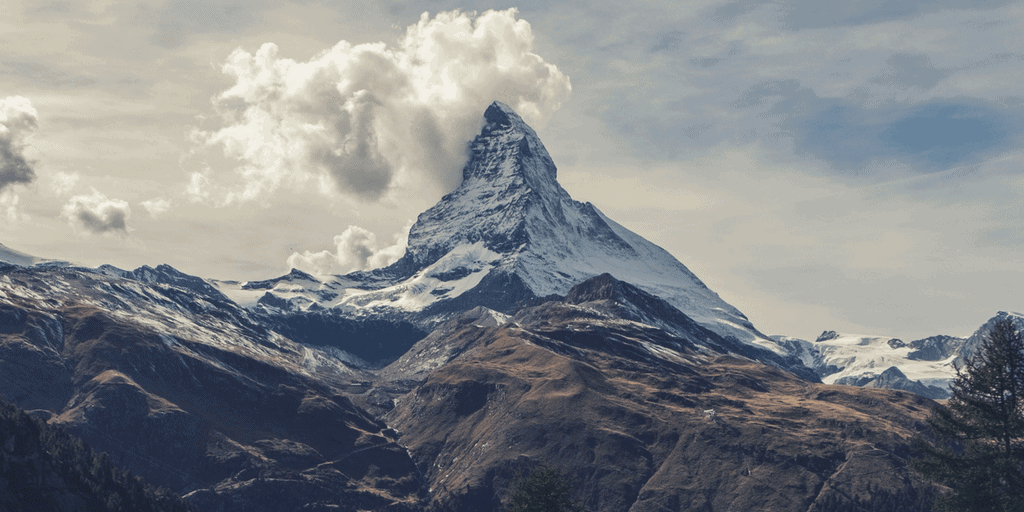

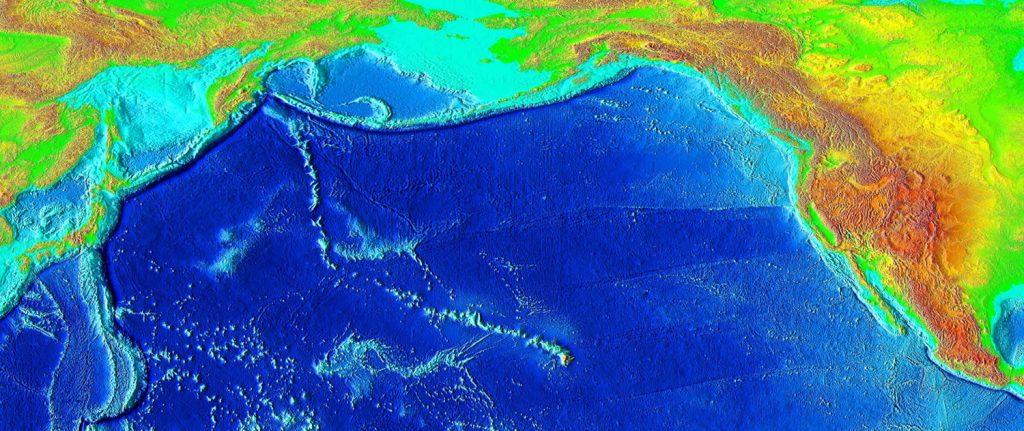


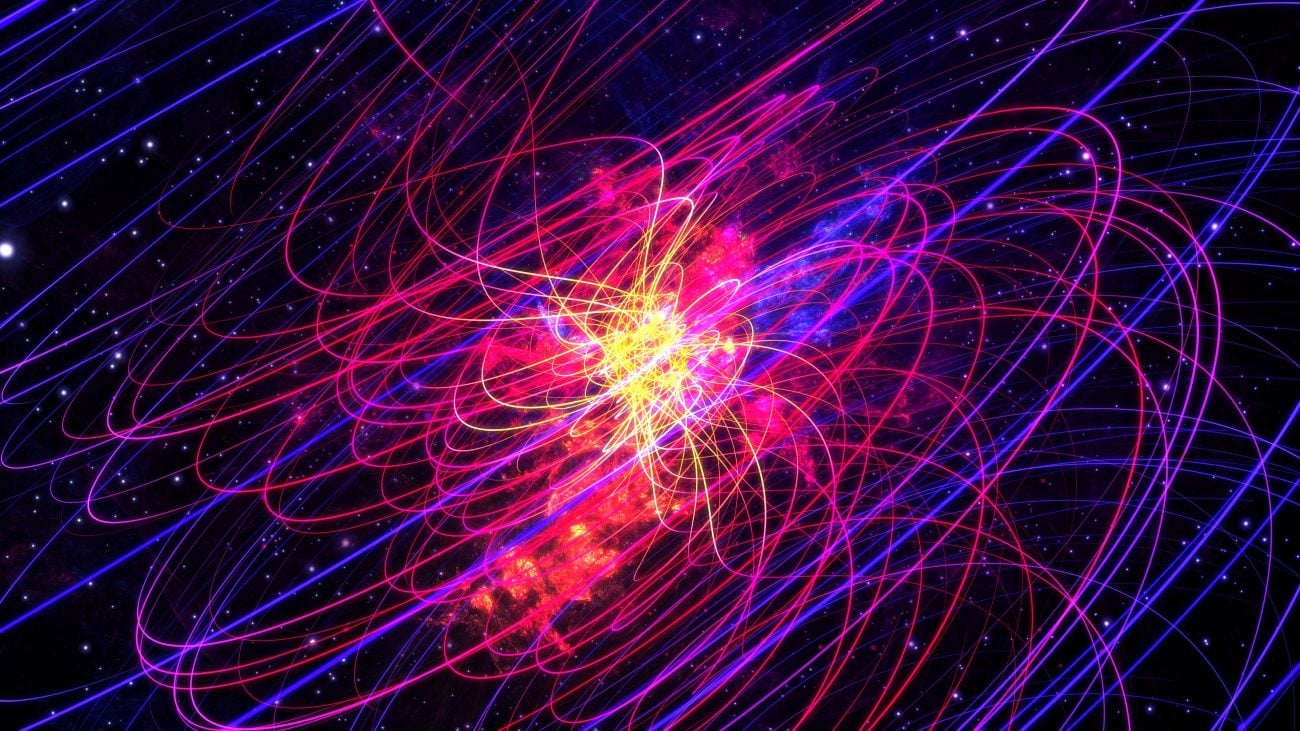

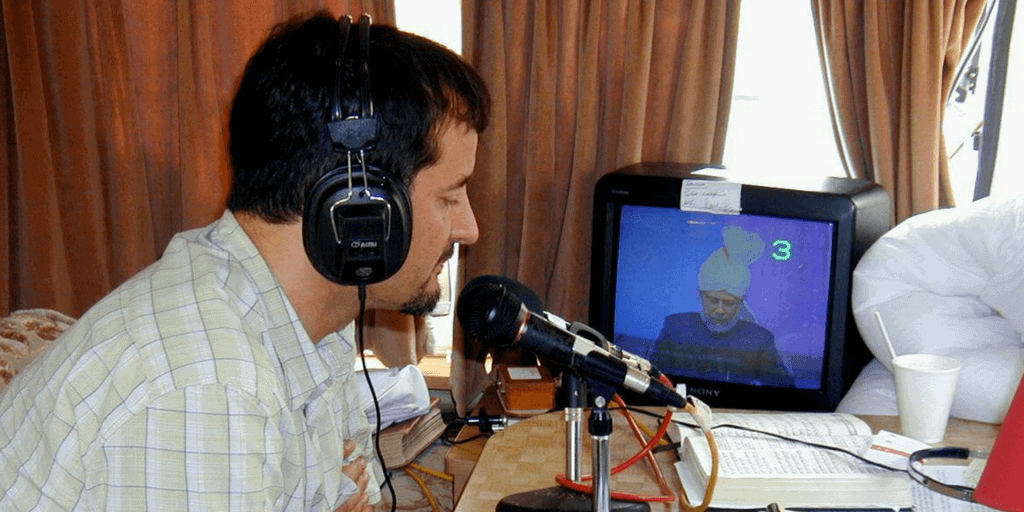
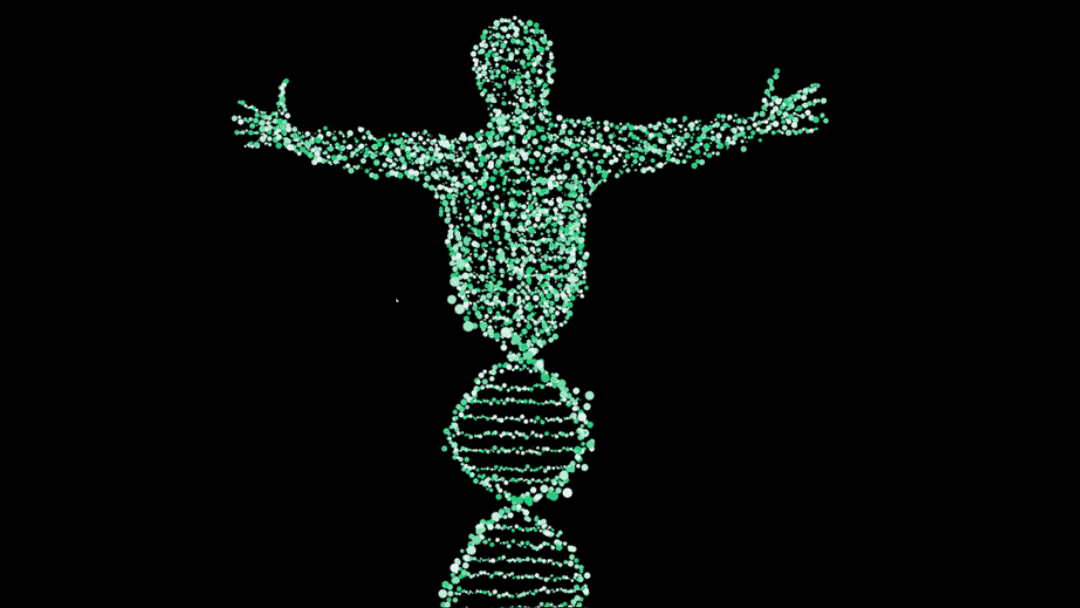

Really well written and presented that the average layman can understand immediately.
Thank you!
It’s 41:10 not 41:11 http://islamawakened.com/quran/41/10/default.htm
It depends on your numbering system. Please see the footnote. Ahmadi translated Quran’s enumerate bismillah… At the beginning of each surah. Others don’t, we believe, erroneously.
Assalamu alaikum! It’s at the beginning of every Surah not ‘each verse’. Please rectify as it is misleading.
JazakAllah
The numbering system 95% of muslims use today is the Kufic one.
Which is superior, if you learn why here: https://youtu.be/4Ha5YoPWOww
i Believe this is true
Thought provoking article. Since I don’t speak Arabic, I’d like to ask why you chose the definition of bless as something to do with water when Lane’s lexicon points to many other meanings of the word “bless”? http://lexicon.quranic-research.net/pdf/Page_0193.pdf
According to this, it can also mean “beautify”.
“He has placed in the earth firm mountains (rawaasiya) rising above its surface, and blessed it with abundance…” (Qur’an 41:11).
You said “Since the verse is speaking of mountains in the geological sense here, and of a time when the earth was still at its early stages of formation, it will be appropriate to take a look at the root meanings of baarak (bless) that appears in it.”
However the blessing is being done to “it”, which is a third person singular feminine pronoun, which means “it” is referring to Earth. It doesn’t make sense to refer to mountains (plural) with a singular pronoun “it”. So, isn’t this verse talking about blessing the earth? Why did you relate the mountains and the word “bless”? Additionally, when looking at all the other verses in the Quran that has the word “bless” in it, there’s no specific referral to water. To my mind, it makes more sense in that it can be translated to something like “We beautified the earth” or “We gifted abundance(of vegetation and animals) to the earth”. Again, I don’t speak Arabic, so I’m asking if this is logical or not.
Arabic acrobatics, flexibility with semantics, quote-mining and retrofitting is the basis of the entire Science-Sunnah movement.
Its seems as though Arabic of the quran has the magical property of being bent and twisted to mean whatever one wants it to mean.
21:32 states the rawaasiyya have wide pathways,so people are guided. How does a underwater mountain guide??
The pathways are placed in the Earth, please re-read the verse.
I really appreciate that you’ve chosen to become a doctor. Humanity needs people like you. But, with all due respect, I beg to disagree and claim that your reasoning is flawed.
Let us consider an analogy in your field. Suppose you’re also the administrator of a certain hospital. You place an order for medical beds. Upon receipt, you discover that these are unstable and have the tendency to rock. You understand quickly that they could be dangerous for patients. You therefore immediately voice out your concern to the manufacturer. He comes to the rescue and offers to stabilize the beds by attaching weights to their legs. How would you react? You would certainly ask the manufacturer to take back his ill-designed beds and come back with strong ones, wouldn’t you? Or, you would refuse to pay him and strike him out of the list of potential suppliers and turn to a reliable one, wouldn’t you?
Your lengthy dissertation aims solely at “proving the truth” of the Quran and to justify the unjustifiable with total disregard to reality. May I remind you that a devastating tsunami occurred on the 26th of December 2004 and killed an estimated 280,000 people? Consequently, the simple question stubbornly remains: why did Allah choose to fragment the Earth’s crust into tectonic plates in the first place? Was this fragmentation necessary? Was the collateral damage unavoidable? Was it intended for a higher good? After realizing the He committed a killer blunder, Allah came to the rescue of Humanity by creating mountains to weigh down on the moving tectonic plates, just like the incompetent manufacturer above proposed to do with the beds.
This brings us to the problem of evil. A being who is omniscient, omnipotent and omnibenevolent will be inclined to eliminate suffering. It seems however, from a human perspective or at least from mine, that the Creator, supposedly possessing all three attributes, got stuck in this situation and had no other way out. To adapt from Blaise Pascal: “God had His reasons which reason knew and still knows nothing of.” In reality though, the absence or non-existence of a God addresses the issue correctly: the Earth is what It is and there is no valid reason to question why It is so nor to try to justify the unjustifiable.
Please ensure that your reasoning doesn’t affect your reputation and the trust we place in you as a doctor.
Good question but I think that the answer is simple. There is still so much that we human don’t understand. I had a quick search and found an article https://www.quantamagazine.org/plate-tectonics-may-be-essential-for-life-20180607/
which states that life might not have evolved without tectonic plates so this is not a flaw in the design but an essential element of our evolution.
I didn’t take the pain to click open your reference because I didn’t have to. You see, you phrased your reply in such a way that God was pulled out of the equation. If, (quoting yourself), “…life might not have evolved without tectonic plates…”, then my, (quoting myself), “…simple question stubbornly remains…”: how come “…the Creator, supposedly possessing all three attributes, got stuck in this situation and had no other way out…”? Would you consider any creator an intelligent and powerful being if he could neither generate life nor make it evolve without creating life-destroying tectonic plates? If this is what God is, then He is stupid, to say the least!
On the other hand, I would agree that “life might not have evolved without tectonic plates” on the condition that God would not exist. Quoting myself again, “…the Earth is what It is…”. Only this makes sense. And we struggle and learn to survive despite the life-destroying tectonic plates of the Earth!
Design, you wrote? Are you not inferring from your own experience of HUMAN design around you? How can you surely infer the whole from the part? I live among people with brown skin. I therefore infer that ALL people have brown skin. Am I right?
zia Mustun’s problem is that he fails to understand (or doesn’t even know) the underlying wisdom & importance behind the movement of tectonic plates under the Earth’s crust; and thus, heeps his ignorance on the intelligent design of God.
Since you take delight in giving analogy from the medical setting, I might as well give you one: You go to the labour ward of a hospital and witnessing the excruciating pains that women go through during childbirth, you take sympathy with these suffering women and poses the question “What the heck is the relevance of these unnecessary pains women are meant to go through!?” – without considering the overarching beneficial outcome of these pains women experience, the coming into existence of you and I.
As a geologist, lemme give you just two importance of these tectonic plates movement in the Earth’s crust. Since you’re not a fun of clicking links, I will just summarize my points here without providing a source link. Maybe, curiosity will let you check it out later in Scientific journals;
1. Tectonic plates movement subducts a chunk of the atmospheric carbon dioxide, and thus makes life habitable on planet Earth. In simple terms, this activity has a direct impact in the reduction of global warming.
2. Tectonic plates movement leads to hydrothermal vents in the Earth’s crust, which is largely responsible for the production of hydrocarbons (i.e. the methane, butane, propane etc gases needed to fuel our machines) which we extract under the sea using the well known FPSO methods.
So next time, don’t move around insulting God blindly for putting in place a phenomenon that sustains your very existence on planet Earth!
Peace.
Alhamdulillah and thank you for the response.
5
Thanks for the article, I was searching a lot about this topic until I found your site. Thank you for spending the time on this!
Also, 95% of Muslims read the Quran’s numbering system established in 1924 using Kufa numbering.
Using a deviant numbering as a reference is only going to be confusing to the majority…Unless your website is *ONLY* for ahmadis.
it doesn’t say the stop earthquakes what it means instead of geting one big ones you get a bunch of tiny weak ones.
Are seamounts formed Before water came to earth ??
Do mountains block earthquakes via the mechanism of isostasy?
Mountains does not reduce the power of earthquakes, it amplify them. Alquran is wrong.
https://eos.org/editors-vox/cascading-down-the-mountain
https://www.utwente.nl/en/news/2020/1/368867/mountains-influence-the-impact-of-earthquakes#lucky-kathmandu
Am sorry but the underwater interpretation is complete bullshit. 21,31 and 16,15 both state that these mountains of rivers and roads in which people can find guidance and the Tafseer say the same. The underwater thing is purely your fabrication and last time I checked nobody is taking hikes on the seafloor.
Thanks for stopping by. The object referred to in these verses is ‘Earth’, not mountains, as the arabic makes clear. Consider reviewing your opinions in more depth before swearing at others with them.
That’s not at all how classical commentators interpreted this verses. It’s quite clear the roads and rivers are in the mountains implying them to be terrestrial. Even your science is wrong if this underwater mountains actually make more earthquakes then there would be otherwise.
The science in the quran narrative is just a intellectual embarrassment for the Islamic world at this point.
I’m not sure if you are still looking at this but I have a quick question. I’m new to reading the Quarn and i never interpreted the verse to mean mountains prevented earthquakes. Based on purely reading what it says (all be it in english) it sounds like it is saying the mountains keep the earth from shaking. What I take from this is that with no mountains (in your idea sea mountains) the earth would shake all the time. “Lest it shake with them”. Really i think taking anything else out of this is a strech. I think we are supposed to read the text and get meaning from it not take our notions and go to the text.
Do you think this makes sense and if so would the earth shake if there were no mountains? my uneducated thought would be that it would not change anything assuming there were still tectonic plates but to be fair I’m an accountant so I’m certainly not the authority.
Thanks for the question! I think the meaning is earthquakes as this is the common experience of the Earth ‘quaking’ that humans know. Shaking = quaking. If no mountains would there be no earthquakes? Well, the analysis we’ve given shows that there is a distinction between jabal mountains and rawasiyya, and the root meanings indicate to which mountains they refer. Rawasiyya do seem to refer to seamounts, and we now we know that they do reduce major tectonic activity in a rather incredible way. So I don’t think it’s a stretch at all – it’s a good interpretation based on the specific language used.
As for whether no mountains = constant shaking, it’s very difficult to answer, because it would be the result of a geology that’s not that found in Earth, and possible in this universe. So I can’t give a direct yes/no to that. – Umar.
0.5